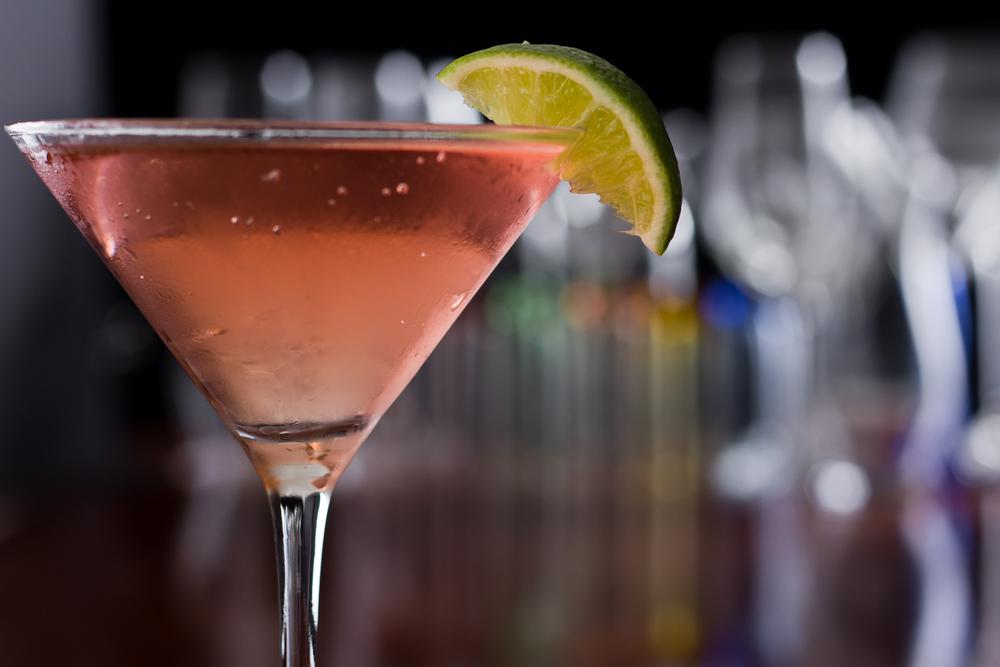In Pacific Standard on Wednesday, Lisa Wade asks what it means to drink “like a woman.” It’s a tricky question: Despite Basic stereotypes involving Cosmos and banana daiquiris, ladies are the fastest-growing segment of whiskey drinkers worldwide, and companies like Bourbon Women count on our thirst for the strong stuff. (I say “our.” I do not mean me. I have gone on record in the pages of Slate about my jejune weakness for sangria and love of sucrose generally.)
Wade, riffing off a piece by Shanna Farrell in Punch, makes a smart observation, which is that while bartenders and waitstaff often expect their female customers to order “juicy or sweet” beverages, those who defy convention with a whiskey neat get vaulted to cool-girl glory. “This is typical for America today,” she writes. “Women are expected to perform femininity, but when they perform masculinity, they are admired and rewarded.”
She’s right. I can still feel the heat shimmer of your judgment, reader. And the side-eye I’m likely to get, asking a waiter for something “refreshing” or “light” (or, God forbid, “bubbly”) is compounded by the approval my female friends draw just by opting for “one of your darker beers, please.” A girl who handles her liquor—and what a weird verb, handle, as if recreational drinking were some kind of beast to manage—seems “down,” chill, hot. She’s almost one of the guys, and in that word almost dwell all the mysteries of sex appeal us Schnapps-sucking chicks will never understand.
Hard liquor commercials are in a tight spot—on the one hand, they want to beguile female customers by trading on the myth of the Cool Girl, but pushing the narrative of female whiskey-drinkers too hard might drive men away. (Wade calls this phenomenon “male flight”: “As an activity, occupation, or product is increasingly associated with women, men leave.”) Already companies like Woodford Reserve and Evan Williams have fallen off the tightrope, listing too far into lame misogyny territory (Williams) or paying lip service to female bourbon-drinkers while actually ladling out the usual macho mystique (Woodford, maybe. After its ad premiered alongside the first episode of Mad Men’s seventh season, no one was really sure what the company was up to.).*
After the Woodford ad ran, Ian Crouch at the New Yorker suggested that “bourbon defines a man’s world, and women are welcome only if they play by the men’s rules”—which seems right, except that it underestimates how delighted we are when women adopt men’s rules at the bar. Usually gender nonconformity costs ladies, but not when it comes to drinking. (The same can’t be said for men: Pity the Singapore Sling–loving dude.)
All of which got us wondering: Why are manly brews more respectable? Is it simply because they are manly? One explanation goes that such quaffs showcase the spirit’s taste: If you order a whiskey cocktail, you probably appreciate the subtle flavor of the liquor and are not just choking down the easiest means to a buzz. “When you seem to know a lot about what you’re drinking, that’s preferable to getting a shot of vodka along with a mixer that covers it up,” says Katlyn Williams, a bartender in Iowa City. “Having good taste in drinks can go in a variety of directions—it doesn’t have to be feminine or frilly or masculine. It does demonstrate specific knowledge about types of liquor, as in ‘I want this cocktail with vermouth,’ not ‘I don’t know what’s in this drink, but can you make it for me?’ ”
That said, “Definitely more women than men order vodka,” the invisible spirit, admits Williams. “I tend to drink a lot of whiskey, and I feel like bartenders will comment on that as if it makes me more of a spectacle.”
But an interest in flavor suggests more than just connoisseurship. Only tough people seek out stuff that tastes “bad”—think about the virile rumble in phrases like “stiff drink” and “hard liquor.” Subjecting yourself to strong spirits implies a kind of Trojan indestructibility, as if the really great thing would be if the bar were a Cormac McCarthy novel so you could publicly not care about the apocalypse, but since it’s not, you’ll just have a Jameson.
“Liking hard drinks is related to other indicators of badassery,” says Anna Newby, a Washington, D.C., bartender and Slate contributor. “It’s finding out a girl boxes instead of running for exercise. Why do we care how people work out? But we do.” Newby notes that whole nooks of drinking culture are propped up by the desire to “prove something”—no one assumes that people enjoy keg stands or tequila shots, but they’ll do them for street cred. And yet other types of self-punishing willpower—the feminized kinds—only attract scorn: “I’ve seen people roll their eyes at a table of girls ordering vodka sodas,” Newby says, “which is perceived as the anorexic drink. It’s like, one girl orders it, and they all do.”
“I’ve definitely watched women be admired for choosing whiskey,” adds Williams. “But honestly, the women bartenders I work with tend to be a lot less opinionated about this stuff than my male friends. We respect each other’s right to go order a martini and then an old fashioned.”
Newby agrees: Guys throwing back appletinis “come in for judgment from their friends more than us,” she says. “We don’t care. We’re just trying to get paid.” As for the dude bartender offering a girl something he thinks she’ll find sweet and delicious, she says, maybe he’s being patronizing. “But I’d bet he’s more focused on the tip.”
Correction, May 1, 2014: This post originally misstated when an ad for Woodford Reserve premiered during an episode of Mad Men. It ran during the seventh season, not the sixth. The post has also been updated to credit Shanna Farrell.
